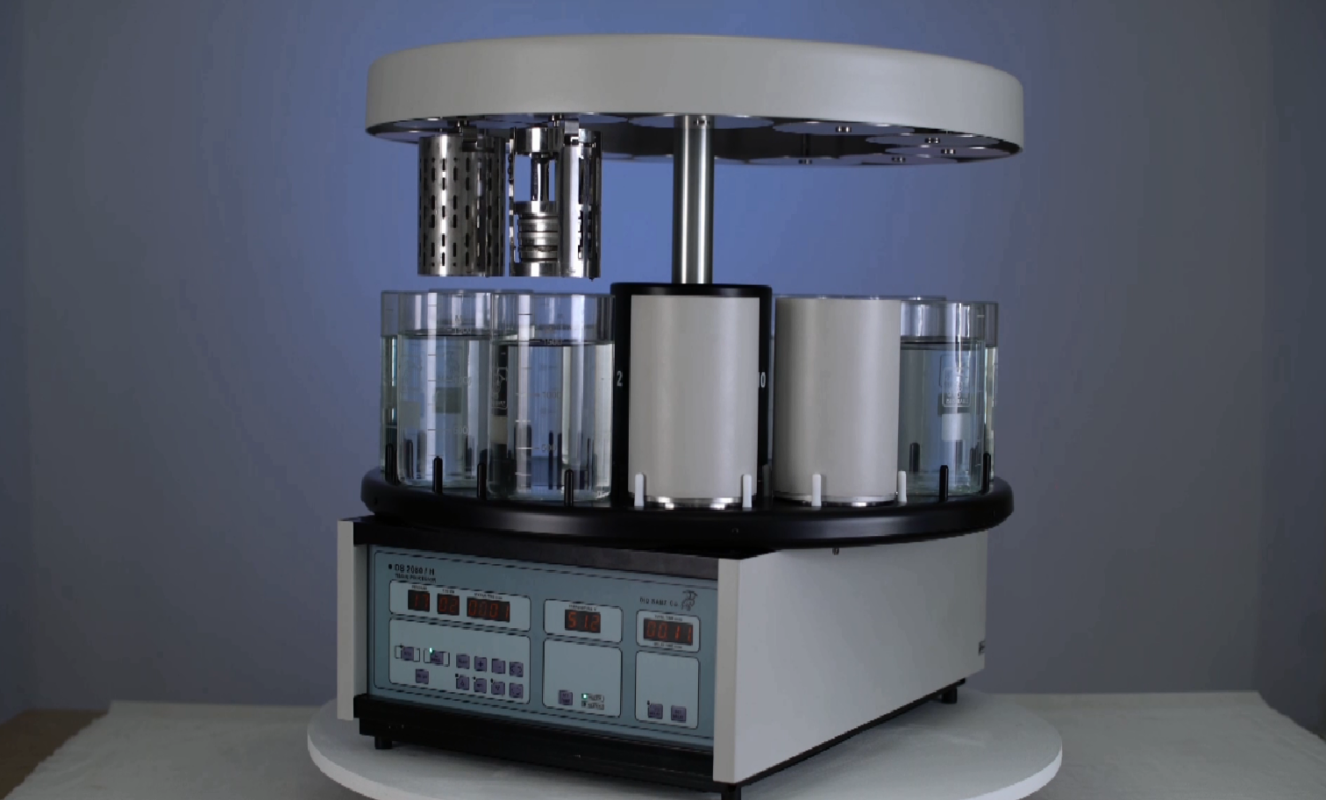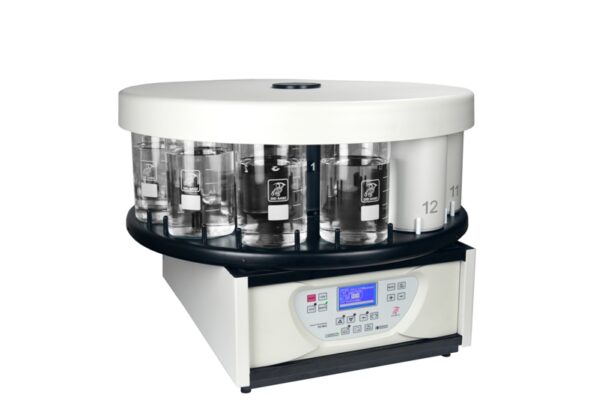Guide
choosing the right Tissue Processor
Tissue Processor
Tissue processor is a device that stabilizes , dehydrates and cleans the tissue sample to maintain the shape of the cell composition so that the cellular components of the sample can be studied directly under a light or electron Microscopes. For microscopic analysis of tissues , it is necessary to fix very thin and high quality samples on glass slides. Then normal and abnormal tissues are properly stained and marked. Very fresh tissues are very sensitive and vulnerable and are easily damaged, therefore it is impossible to prepare very thin parts of them unless they are chemically stabilized.
The device has high capabilities to assist in these processes and has 2 types of Linear and Rotary.
Tissue Processor is used to prepare Tissue samples and thin layers for sectioning with Microtome.
First of all fill the Tissue Processor containers with the solutions. Then the tissues are placed in separate capsules inside the Processor Baskets. Mechanical arm inserts the Tissue basket into the solutions in the containers. Then finally, the tissues inside the capsules are cut into thin layers by Microtome after preparation and molding with paraffin. The Tissue Processor machine has two types of movement which are : transitional motion or motion of container (vessel) to container(vessel) and oscillating motion
Stages of operation of Tissue processor:
- Fixation: sudden & simultaneous killing of cells in tissue so that the shape and composition of the cells do not change as much as possible
- Dehydration: removing all detachable water from tissue.
- Clearing or Clarification: Gaps and tissue pores are opened by xylene.
- Impregnation: Molten Paraffin gradually penetrates into the pores of the tissue.
Operational instruction of Tissue Processor in laboratory
One of the seven steps of pathology is Dehydration and Impregnation , this technical methods is done in laboratory by a device called Tissue Processor .This device includes 12 containers with a total volume of each container of 1000 ml and contains different solutions that these solutions have the following 3 functions
- Dehydration (by alcohol)
- Clarification (by xylene)
- Impregnation with paraffin
First, the cassette containing the tissue is placed inside a special basket, The basket is then hung on the ring of the machine so that the basket enters container number 1, After one hour, the head of the device automatically rises and It rotates about 30 degrees clockwise In this way, the basket is placed on top of container number 2, then the top of the machine automatically comes down and the basket is inserted in to the container number 2. After one hour, the fixation phase completes successfully.The head of the device then automatically raises about 30 degrees clockwise. Thus, the basket containing tissue, lands in container number 3. This continues until the dehydration phase is completed successfully.
The workflow of the Tissue Processor machine proceeds automatically until the tissue pores are opened by the xylene in the stage of clearing (Clarification). In the impregnation stage, molten paraffin (52-56 degrees Celsius) gradually penetrates into the pores of the tissue, eventually causing the firmness and consistency of the tissue.
Paraffin is solid at laboratory temperature It must reach a melting temperature of 60 degrees Celsius. For this purpose, containers 11 and 12 of the device have an element that generates heat in the container and melts paraffin. When the tissue basket is placed in molten paraffin, this substance penetrates into the tissue and the tissue becomes impregnated. Paraffin penetrates the crevices and seams of the tissue and the tissue will harden and be sectionable with a Microtome. The impregnation material must be the same as the molding material. The processor is equipped with automatic timer buttons, on and off buttons, up and down and rotating buttons, lights to ensure the device is on, and buttons to adjust the program and cycle the device and is usually about 18 hours long to takes a complete cycle.
Did Sabz Tissue Processor
Important points to be considered in choosing a Tissue Processor
- Container capacity
- Ability to run several separate programs simultaneously
- Speed and duration of tissue processing
- Equipped with two modes, fully automatic and manual
- High ability and quality in construction
- High processing quality in accordance with the permeability speed of various tissues.
- Ability to process multiple baskets containing tissue
- Number of spaces for solution containers
- Warranty period and after-sales service as well as delivery time
- Having the necessary licenses and standards
- Complete device safety and proper ventilation
- It does not cause contamination in the laboratories
- Easy to use and operator training
- Consumption savings
- display, lights and keypad quality
- Economic justification and price commensurate with the brand and quality
- Physical appearance, dimensions and weight of the device
- Being linear or rotary
Important tips for Tissue Processor maintenance in the laboratory
- Establish proper ventilation at the location of the Tissue Processor
- Regular replacement of solutions according to workload and other operating conditions
- Temperature control of paraffin in Tissue Processor containers (paraffin bath)
- Adjust the appropriate temperature for melting paraffin in the Tissue Processor according to the type of paraffin used
- Periodic inspection of the Tissue Processor in terms of electrical and mechanical parts according to the manufacturer’s instructions
- control concentration of the alcohol in processed tissue containers
- Perform periodic services in accordance instructions
- Ensure the connection of power plug outlets of the device to the socket with ground connection
- Adjust the temperature of paraffin melting containers according to the type of paraffin
- When filling the solutions in the containers of the machine, use a certain volume of liquid, so that the excess volume of liquid does not spill when the baskets are immersed inside the containers
- Pay attention to screen messages while the device is operating
The usual Sequence of solutions in Tissue Processor containers
- Containers No. 1 and 2 contain 10% formalin and in some cases, container No. 2 uses distilled water instead of formalin.
- Containers 3 to 6 contain methanol alcohol (in general, ethanol absorbs water better than methanol, but due to the higher cost, methanol is used, and of course methanol also has decolorizing properties)
- Container number (3) alcohol 70% Container number (4) Alcohol 80% Container number (5) Alcohol 90% and Container number (6) Alcohol 96%.The percentage of alcohols has been chosen Ascending so that dehydration is done slowly. This step is very important and if dehydration with alcohol is not done well, the next steps will be damaged and will cause the tissues to shrink.
- Containers 7 and 8 contain 100% absolute methanol alcohol
- Xylene containers No. 9 and 10, which are responsible for clearing the tissue and removing alcohol from it
- Containers 11 and 12 contain paraffin
The concentrations mentioned above may vary slightly from laboratory to laboratory

 فارسی
فارسی

